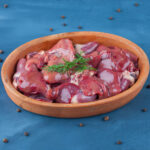
In this article
overview
Imagine feeling dizzy, faint, or anxious out of nowhere. These could be signs of low blood sugar, or hypoglycemia, a condition where your blood glucose levels fall below 70 milligrams per deciliter (mg/dL). While hypoglycemia is a common issue for people with diabetes, anyone can experience it under certain circumstances. Addressing low blood sugar promptly and effectively is crucial for preventing severe symptoms such as seizures. This guide will explore the best foods to eat when your blood sugar drops and how to manage hypoglycemia effectively.
The Basics of Blood Sugar Levels
Key Causes of Hypoglycemia
Blood sugar levels fluctuate throughout the day based on diet, activity, and other factors. Hypoglycemia, defined as blood glucose levels below 70 mg/dL, can cause symptoms like shakiness, confusion, and blurred vision, particularly when levels fall below 55 mg/dL.
Diabetes: Hypoglycemia is more common in people with diabetes, especially those with type 1 diabetes. These individuals are three times more likely to experience low blood sugar than those with type 2 diabetes.
Antidiabetic Medications: Insulin, meglitinides, and sulfonylureas, commonly used by diabetics, are the leading causes of hypoglycemia. Incorrect insulin dosing, such as taking too much or injecting it into muscle tissue, can exacerbate the problem.
Dietary Factors: Skipping meals, not eating enough, or poorly timing insulin injections can all lead to hypoglycemia.
Less Common Causes: Factors such as medications, alcohol consumption, malnourishment, serious illness, and some tumors can cause hypoglycemia in people without diabetes.
Effective Management of Low Blood Sugar
The 15-15 Rule
For managing hypoglycemia, the 15-15 rule is widely recommended. Consume 15 grams of carbohydrates, wait 15 minutes, then check your blood sugar. If it’s still below 70 mg/dL, consume another 15 grams of carbs. Repeat until your levels stabilize above 70 mg/dL, then have a balanced meal or snack to maintain stability.
Choosing High Glycemic Index Foods
When treating hypoglycemia, opt for high glycemic index (GI) foods that quickly raise blood sugar. The GI measures how fast a food affects blood glucose levels, with high-GI foods scoring above 70. These foods are low in fiber and protein, ensuring rapid absorption of sugar into the bloodstream.
Severe Hypoglycemia: Blood sugar levels below 55 mg/dL should be treated with injectable glucagon, not the 15-15 rule. Knowing how to administer glucagon is crucial for friends and family members in case of emergencies.
Best Foods to Raise Blood Sugar
Quick and Effective Choices
- Juice or Regular Soda: Half a cup of juice or soda provides approximately 15 grams of carbs and can quickly raise blood sugar levels.
- Sugar, Honey, or Maple Syrup: One tablespoon of any of these sweeteners is a rapid solution for low blood sugar.
- Hard Candies or Jellybeans: These candies are convenient and effective. For instance, four Lifesavers provide 15 grams of carbs.
- Glucose Tablets or Gel: Specifically designed for hypoglycemia, these products are reliable and easy to use.
- High-Glycemic Fruits: Fifteen grapes, half a banana, ½ cup of applesauce, or a small orange are excellent natural options.
Diet and Prevention Tips
Preventing hypoglycemia involves regular monitoring of blood sugar levels and following a well-rounded diet. Consistent meals and snacks that balance carbs and insulin needs are key. Working with an endocrinologist or a dietitian specialized in diabetes management can help tailor a diet plan to your individual needs.
The Takeaway: Staying Prepared and Informed
Managing hypoglycemia effectively requires knowledge and preparation. By understanding the causes and knowing the right foods to eat, you can prevent severe symptoms and maintain stable blood sugar levels. Always have quick-carb foods on hand and educate those around you on how to help in an emergency.
Empowering Your Health
Hypoglycemia can be a manageable condition with the right knowledge and tools. By following guidelines like the 15-15 rule and choosing the right foods, you can quickly address low blood sugar levels. Remember, a proactive approach to managing your diet and blood sugar can significantly improve your quality of life. Stay informed, stay prepared, and take control of your health
A Quick Review
Low blood sugar, or hypoglycemia, can cause dizziness and fainting, and is common in people with diabetes. Treating it quickly with high-carb foods like juice or candies is crucial. This guide covers the causes, symptoms, and effective management strategies for hypoglycemia to help maintain stable blood sugar levels
FAQS
What is hypoglycemia?
Hypoglycemia is a condition where blood sugar levels drop below 70 mg/dL, causing symptoms like dizziness, confusion, and fainting.
Who is most at risk for hypoglycemia?
People with diabetes, especially those on insulin or other antidiabetic medications, are at higher risk for hypoglycemia.
What are the symptoms of low blood sugar?
Symptoms include shakiness, confusion, blurred vision, dizziness, fainting, and in severe cases, seizures.
How can I quickly raise my blood sugar?
Consuming 15 grams of carbohydrates from sources like juice, candies, or glucose tablets can quickly raise blood sugar levels.
What is the 15-15 rule?
The 15-15 rule involves consuming 15 grams of carbs, waiting 15 minutes, and then checking blood sugar levels. Repeat if necessary until levels are above 70 mg/dL.











